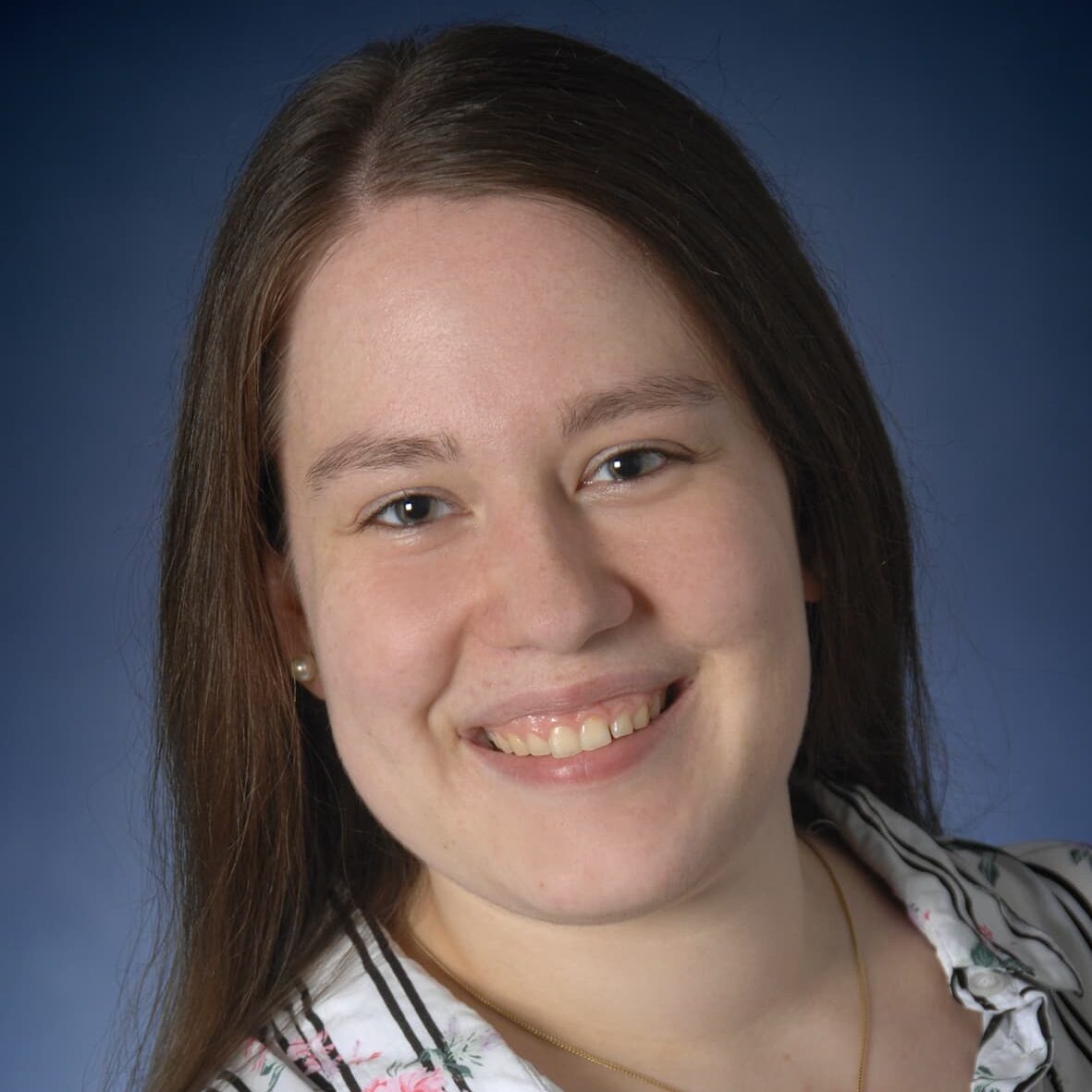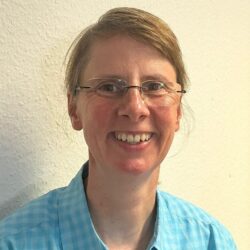
Institute for Analytical Research (IFAR)
The Institute for Analytical Research (IFAR) was founded in 2004 as a research institution. The institute is mainly active in the fields of trace analysis and structure elucidation. An essential focus is the organic trace analysis in aqueous samples. A broad spectrum of analytical and technological methods is developed and applied in our laboratories. Our laboratory equipment is state-of-the-art and is geared towards the implementation of separation methods, especially chromatography. IFAR participates in numerous national and international analytical committees and research teams.
Research team
FIELDS OF ACTIVITY AND EQUIPMENT
- Developments in the field of organic trace analysis in different matrices
- Monitoring studies
- Metabolism elucidation and degradation studies
- Polymer analysis, especially microplastics and tire abrasion
- Substance evaluation
- Structural elucidation of organic substances
- Inorganic element analysis
- Application development
- Product validation
- Food analysis and food safety
- Quality Management
- Environmental Analysis
- Bioanalytics
- Pharmaceutical analytics
- Forensics
- Sustainability
- Waterworks and sewage plant technology
- Consulting and training for external professionals in the field of analytics
- National and international theoretical and practical courses on water analysis, environmental analysis, food analysis and bioanalysis
- Organization of international conferences
IFAR’s equipment is extensive and serves a wide range of analytical problems. Our instrument pool includes:
- Orbitrap Velos Pro (HPLC-HR-MS)
- 3 x HPLC-MS/MS
- Q-TOF-MS
- MALDI-TOF/TOF-MS
- ContrAA HR-CS AAS (Analytik Jena®)
- AAS (Analytik Jena®)
- GC-MS and GC-MS/MS
- HPLC-DAD
- GPC
- ASE
- IC
- ICP/OES (Analytik Jena®)
- FT-IR
- 200i IR microscopy system
- PCR
- ELISA
IFAR has several laboratories for sample preparation and measurement. The spectrum of measurable substances is extensive. Validated analytical methods are available, also for routine investigations. Measurable substances include:
- Plant protection products and transformation products
- Perfluorinated and polyfluorinated chemicals and transformation products
- Surfactants and detergents as well as transformation products
- Active pharmaceutical ingredients and transformation products
- Personal care products and transformation products
- Industrial chemicals and transformation products
- Synthetic polymers, microplastics
- Inorganic cations and anions
RESEARCH PROJECTS
IFAR’S ACQUIRED PROJECTS
- Public research programs at national or international level
- R & D funds from the industry, which is increasingly outsourcing research and development
- Contract research
Current projects
Completed projects
COOPERATION PARTNERS
Analytik Jena and Hochschule Fresenius collaborate to carry out basic research and method development for the determination of halogenated hydrocarbons in environmental analysis using high-resolution continuum source molecular absorption spectrometry (HR-CS MAS).
Analytik Jena is a leading provider of high-end analytical measurement technology, instruments, and products in the fields of biotechnology and molecular diagnostics as well as liquid handling and automation technology. Its portfolio includes both classic analysis technology, in particular for measuring concentrations of elements and molecules, and complete systems for bioanalytical applications in the life science sector, which cover the highly complex analysis cycle of a sample from sample preparation to detection. Automated high-throughput screening systems for the pharmaceutical industry are part of this segment’s extensive portfolio. Precise quality of results and a high degree of operating convenience are the top priorities in the development of the laboratory analysis products of Analytik Jena, which is part of the Swiss Endress+Hauser Group.
IFAR is equipped with state-of-the-art equipment from Analytik Jena for water, environmental, food, and pharmaceutical analysis. In detail, IFAR thus has an optical emission spectrometer (PlasmaQuant® PQ 9000), a mass spectrometer (PlasmaQuant® MS), an atomic absorption spectrometer (contrAA®), a solid TOC analyzer (multi N/C®) and a UV/Vis spectrophotometer (SPECORD®) at its disposal.
As a technical and scientific authority within the Hessian environmental administration, the Hessian Agency for Nature Conservation, Environment and Geology (HLNUG) is in charge of environmental monitoring. It advises ministries and other authorities in a scientific, specialized and practical-orientated manner. Therefore, it cooperates with several universities. Regarding environmental questions, it serves as contact for companies and public.
Publications
2019
- Barcelo D, Knepper TP (2019): Analysis, fate and effects of microplastics in the environment: Preface to article collection. Special Issue on Analysis of Micro(nano) plastics in the environment (Eds. Barcelo D, Knepper TP) Trends Anal. Chem. 121:115671, doi:10.1016/j.trac.2019.115671
- Zahn D, Meusinger R, Frömel T, Knepper T (2019): Halomethanesulfonic Acids-A New Class of Polar Disinfection Byproducts: Standard Synthesis, Occurrence, and Indirect Assessment of Mitigation Options. Environ. Sci. Technol. 53:8994−9002 doi:10.1021/acs.est.9b03016
- Janousek RM, Lebertz S, Knepper TP (2019): So far unidentified sources of perfluoroalkyl and polyfluoroalkyl substances: Building materials and industrially used fabrics. Environ Sci Process Impacts. Environ. Sci.: Processes Impacts 21:1936-1945 doi:10.1039/c9em00091g.
- Münster-Müller S, Matzenbach I, Knepper TP, Zimmermann R, Pütz M: Profiling of synthesis-related impurities of the synthetic cannabinoid Cumyl-5F-PINACA in seized samples of e-liquids via multivariate analysis of UHPLC/MSn data. Drug Test Anal.1–8 (2019) doi:10.1002/dta.2673
- Gros L, Knepper TP: The flame—not the ashes: achievements and heritage of a passionate analytical chemist. Anal. Bioanal. Chem. 411:1927–1933 (2019) doi:10.1007/s00216-019-01647-y
- Triebskorn R, Braunbeck T, Grummt T, Hanslik L, Huppertsberg S, Jekel M, Knepper TP, Krais S, Müller YK, Pittroff M, Ruhl AS, Schmieg H, Schür C, Strobel C, Wagner M, Zumbülte N, KohleHR: Relevance of nano- and microplastics for freshwater ecosystems: A critical review. Trends Anal. Chem. 110:375-392 (2019) doi:10.1016/j.trac.2018.11.023
- Schulze S, Zahn D, Montes R, Rodil R, Quintana JB, Knepper TP, Reemtsma T, Berger U: Occurrence of emerging persistent and mobile organic contaminants in European water samples. Water Res. 153: 80-90 (2019) doi:10.1016/j.watres.2019.01.008
- Janousek RM, Mayer J, Knepper TP: Is the phase-out of long-chain PFASs measurable as fingerprint in a defined area? Comparison of global PFAS concentrations and a monitoring study performed in Hesse, Germany from 2014 to 2018. Trends Anal. Chem. 120 (2019) 115393 doi:10.1016/j.trac.2019.01.017
2018
- Zahn D, Mucha P, Zilles V,.Touffet A; Gallard H, Knepper TP, Frömel T (2018): Identification of potentially mobile and persistent transformation products of REACH-registered chemicals and their occurrence in surface waters. Water Res., doi:10.1016/j.watres.2018.11.042
- Ritscher et. Al (2018): Zürich Statement on Future Actions on Per- and Polyfluoroalkyl Substances (PFASs). Environ. Health Perspect. 126(8):084502-1-084502-5, doi:10.1289/EHP4158
- Huppertsberg S, Knepper, TP (2018): Instrumental analysis of microplastics—benefits and challenges. Anal Bioanal. Chem. 410(25):6343–6352, doi:10.1007/s00216-018-1210-8
- Dimzon IKD, Morat AS, Müller J, Yanel RK, Lebertz S, Weil H, Perez TR, Müller J, Dayrit FM, Knepper TP (2018): Trace organic chemical pollutants from the lake waters of San Pablo City, Philippines by targeted and non-targeted analysis. Sci. Total Environ. 639(15):588-595, doi:10.1016/j.scitotenv.2018.05.217
- Llorca M, Farré M, Sànchez-Melsió A, Villagrasa M, Knepper TP, Barceló D (2018): Perfluoroalkyl phosphonic acids adsorption behaviour and degradation by wastewater organisms, Sci. Total Environ. 636:273–281, doi:10.1016/j.scitotenv.2018.04.271
- Köke N, Zahn D, Knepper TP, Frömel T (2018): Multi-layer solid-phase extraction and evaporation – enrichment methods for polar organic chemicals from aqueous matrices. Anal. Bioanal. Chem. 410:2403-2411, doi:10.1007/s00216-018-0921-1
2017
- Gremmel C, Frömel T, Knepper TP (2017): HPLC–MS/MS methods for the determination of 52 perfluoroalkyl and polyfluoroalkyl substances in aqueous samples. Anal Bioanal Chem 409:1643–1655 doi:10.1007/s00216-016-0110-z
- Dimzon IKD, Westerveld J, Gremmel C, Frömel T, Knepper TP, de Voogt P (2017): Sampling and simultaneous determination of volatile per- and polyfluoroalkyl substances in wastewater treatment plant air and water. Anal Bioanal Chem 409: 1395-1404, doi:10.1007/s00216-016-0072-1
2016
- Reemtsma T, Berger U, Arp HPH, Gallard H, Knepper TP, Neumann M, Quintana JB, de Voogt P (2016): Mind the Gap: Persistent and Mobile Organic Compounds – Water Contaminants That Slip Through. Environ Sci Technol 50:10308−10315, doi:10.1021/acs.est.6b03338
- Dimzon IKD, Frömel T, Knepper TP (2016): Characterization of 3-Aminopropyl Oligosilsesquioxane. Anal Chem 88(9):4894-902, doi:10.1021/acs.analchem.6b00732
- Gremmel C, Frömel T, Knepper TP (2016): Systematic determination of perfluoroalkyl and polyfluoroalkyl substances (PFASs) in outdoor jackets. Chemosphere 16:173-180, doi:10.1016/j.chemosphere.2016.06.043
- Zahn D, Frömel T, Knepper TP (2016): Halogenated methanesulfonic acids: A new class of organic micropollutants in the water cycle. Water Res 101:292-299, doi:10.1016/j.watres.2016.05.082
- Dimzon IKD, Trier X, Frömel T, Helmus R, Knepper TP, de Voogt P (2016): High Resolution Mass Spectrometry of Polyfluorinated Polyether – based Formulation. J American Society Mass Spectrometry 27:309-318, doi:10.1007/s13361-015-1269-9
2015
- Frömel T, Knepper TP (2015): Aerobic biotransformation studies of two trifluoromethoxy-substituted aliphatic alcohols and a novel fluorinated C3-based building block. J Fluorine Chem 177:80–89 doi:10.1016/j.jfluchem.2015.06.015
- Klein S, Worch E, Knepper TP (2015): Occurrence and spatial distribution of microplastic in river shore sediments of the Rhine-Main area in Germany. Environ Sci Technol 49:6070−6076
- Dimzon IKD, Knepper TP (2015): Degree of deacetylation of chitosan by infrared spectroscopy and partial least squares. Int J Biol Macromol 72:939-945
2014
- Tetko IV, Schramm KW, Knepper TP, Peijnenburg WJGM, Hendriks AJ, Navas JM, Nicholls IA, Öberg T, Todeschini R, Schlosser E, Brandmaier S (2014): Experimental and Theoretical Studies in the EU FP7 Marie Curie Initial Training Network Project, Environmental ChemOinformatics (ECO). ATLA 42(1):7-11
- Ieromina O, Peijnenburg WJGM, de Snoo G, Müller J, Knepper TP (2014): Impact of Imidacloprid on Daphnia Magna under different food quality regimes. Environ Tox Chem 33(3):621–631, doi:10.1002/etc.2472
2013
- Periša M, Babić S, Škorić I, Frömel T, Knepper TP (2013): Photodegradation of sulfonamides and their N4-acetylated metabolites in water by simulated sunlight irradiation: Kinetics and identification of photoproducts. Environ Sci Pollut Res, doi:10.1007/s11356-013-1836-1
- Dimzon IKD, Ebert J, Knepper TP (2013): The Interaction of Chitosan and Olive Oil: Effects of Degree of Deacetylation and Degree of Polymerization. Carbohydrate Polymers 92:564–570, doi:10.1016/j.carbpol.2012.09.035
2012
- Ding GH, Frömel T, van den Brandhof EJ, Baerselman R, Peijnenburg WJGM (2012): Acute toxicity of poly- and perfluorinated compounds to two cladocerans, Daphnia magna and Chydorus sphaericus. Environ Tox Chem 31(3):605-610, doi:10.1002/etc.1713
- Garcia M, Frömel T, Müller J, Peschka M, Knepper TP, Diaz-Cruz S, Barceló D (2012): Biodegradation studies of N4-Acetylsulfapyridine and N4-Acetylsuflamethazine in environmental water applying mass spectrometry techniques. Anal Bioanal Chem 402(9):2885–2896, doi:10.1007/s00216-012-5751-y
- Llorca M, Farré M, Picó Y, Müller J, Knepper TP, Barceló D (2012): Analysis of perfluoroalkyl substances in waters from Germany and Spain. Sci Total Environ 431:139–150 doi:10.1016/j.scitotenv.2012.05.011
- Gellrich V, Stahl T, Knepper TP (2012): Behavior of perfluorinated compounds in soils during leaching experiments. Chemosphere 87:1052-1056, doi:10.1016/j.chemosphere.2012.02.011
2010
- Frömel T, Knepper TP (2010): Biodegradation of fluorinated alkyl substances. Rev Environ Contam Toxicol 208:161-177 doi:10.1007/978-1-4419-6880-7_3
- Frömel T, Knepper TP (2010): Fluorotelomer ethoxylates: Sources of highly fluorinated environmental contaminants Part I: Biotransformation. Chemosphere 80(11):1387-1392, doi:10.1016/j.chemosphere.2010.06.002
- Eubeler J, Bernhard M, Zok S, Knepper TP (2010): Environmental biodegradation of synthetic polymers – Part II: biodegradation of different polymer groups. TrAC 29 (1):84-100, doi:10.1016/j.trac.2009.09.005
- Nieto A, Peschka M, Borrull F, Pocurull E, Marcé RM, Knepper TP (2010): Phosphodiesterase Type V Inhibitors: Occurrence and fate in Wastewater. Water Res 44 (5):1607-1615, doi:10.1016/j.watres.2009.11.009
2009
- Eubeler J, Bernhard M, Zok S., Knepper TP (2009): Environmental biodegradation of synthetic polymers – Part I: Test methodologies and procedures. TrAC 28 (9):1057-1072, doi:10.1016/j.trac.2009.06.007
- Buttiglieri G, Peschka M, Frömel T, Müller J, Malpei F, Seel P, Knepper TP (2009): Environmental occurrence and degradation of the herbicide n-chloridazon. Water Res 43:2865–2873 doi:10.1016/j.watres.2009.03.035
2008
- Bernhard M, Eubeler J, Zok S., Knepper TP (2008): Aerobic biodegradation of polyethylene glycols of different molecular weights in wastewater and seawater. Water Res 42:4791–4801 doi:10.1016/j.watres.2008.08.028
- Frömel T, Knepper TP (2008): Mass Spectrometry as an indispensible tool for Biodegradation Studies of Surfactants. TrAC, special issue entitled “Advanced mass spectrometric analysis of metabolites and degradation products” 27 (11):1091-1106, doi:10.1016/j.trac.2008.09.012
- Frömel T, Peschka M, Fichtner N., Hierse W, Kleineidam M, Bauer KH, Knepper TP (2008): Simultaneous aerobic biotransformation study and synthesis of ω-(bis(trifluoromethyl)amino)alkane-1-sulfonates. Rapid Commun Mass Spectrom 22:3957-3967, doi:10.1002/rcm.3797
- Terziċ S, Senta I, Ahel M, Gros M, Petroviċ M, Barcelo D, Müller J, Knepper TP, Martí I, Ventura F, Jovancic P, Jabucar D (2008): Occurrence and Fate of Emerging Wastewater Contaminants in Western Balkan Region. Sci Total Environ 399:66–77, doi:10.1016/j.scitotenv.2008.03.003
- Peschka M, Fichtner N, Hierse W, Kirsch P, Montenegro E, Seidel M, Wilken RD, Knepper TP (2008): Synthesis and analytical follow-up of the mineralization of a new fluorosurfactant prototype (Dedicated to Prof. Dr. Klaus Haberer on occasion of his 80th birthday). Chemosphere 72:1534–1540, doi:10.1016/j.chemosphere.2008.04.066
- Peschka M, Frömel T, Fichtner N, Hierse W, Kleineidam M, Montenegro E, Knepper TP (2008): Mechanistic studies in biodegradation of the new synthesized fluorosurfactant 9-[4-(trifluoromethyl)phenoxy]nonane-1-sulfonate. J Chrom A 1187:79–86, doi:10.1016/j.chroma.2008.02.007
2007
- Bernhard M, Eubeler J, Zok S., Knepper TP (2008): Aerobic biodegradation of polyethylene glycols of different molecular weights in wastewater and seawater. Water Res 42:4791–4801 doi:10.1016/j.watres.2008.08.028
- Frömel T, Knepper TP (2008): Mass Spectrometry as an indispensible tool for Biodegradation Studies of Surfactants. TrAC, special issue entitled “Advanced mass spectrometric analysis of metabolites and degradation products” 27 (11):1091-1106, doi:10.1016/j.trac.2008.09.012
- Frömel T, Peschka M, Fichtner N., Hierse W, Kleineidam M, Bauer KH, Knepper TP (2008): Simultaneous aerobic biotransformation study and synthesis of ω-(bis(trifluoromethyl)amino)alkane-1-sulfonates. Rapid Commun Mass Spectrom 22:3957-3967, doi:10.1002/rcm.3797
- Terziċ S, Senta I, Ahel M, Gros M, Petroviċ M, Barcelo D, Müller J, Knepper TP, Martí I, Ventura F, Jovancic P, Jabucar D (2008): Occurrence and Fate of Emerging Wastewater Contaminants in Western Balkan Region. Sci Total Environ 399:66–77, doi:10.1016/j.scitotenv.2008.03.003
- Peschka M, Fichtner N, Hierse W, Kirsch P, Montenegro E, Seidel M, Wilken RD, Knepper TP (2008): Synthesis and analytical follow-up of the mineralization of a new fluorosurfactant prototype (Dedicated to Prof. Dr. Klaus Haberer on occasion of his 80th birthday). Chemosphere 72:1534–1540, doi:10.1016/j.chemosphere.2008.04.066
- Peschka M, Frömel T, Fichtner N, Hierse W, Kleineidam M, Montenegro E, Knepper TP (2008): Mechanistic studies in biodegradation of the new synthesized fluorosurfactant 9-[4-(trifluoromethyl)phenoxy]nonane-1-sulfonate. J Chrom A 1187:79–86, doi:10.1016/j.chroma.2008.02.007
2006
- Bernhard M, Müller J, Knepper TP (2006): Biodegradation of persistent polar pollutants in wastewater: Comparison of an optimised lab-scale membrane bioreactor and activated sludge treatment. Water Res 40, 3419-3428, doi:10.1016/j.watres.2006.07.011
- González S, Müller J, Petrovic M, Barceló D, Knepper TP (2006): Biodegradation studies of selected priority acidic pesticides and diclofenac in different bioreactors. Environ Pollut 144 (3):926-923, doi:10.1016/j.envpol.2006.02.021
- Peschka M, Eubeler JP, Knepper TP (2006): Occurrence and fate of barbiturates in the aquatic environment. Environ Sci Technol 40 (23), 7200-7206, doi:10.1021/es052567r
- Reemtsma T, Weiss S., Mueller J, Petrovic M, González S, Barcelo D, Ventura F, Knepper TP (2006): Polar pollutants entry into the water cycle by municipal wastewater: A European perspective. Environ Sci Technol 40 (17) :5451 – 5458, doi:10.1021/es060908a
2005
- Knepper TP, Werner A, Bogenschütz G (2005): Determination of synthetic chelating agents in surface and waste water by ion chromatography–mass spectrometry. J Chrom A 1085 (2):240-246, doi:10.1016/j.chroma.2005.06.045
- Kruawal K, Sacher F, Werner A, Müller J, Knepper TP (2005): Chemical water quality in Thailand and its impacts on the drinking water production in Thailand. Sci Total Environ 340 (1-3):57-70, doi:10.1016/j.scitotenv.2004.08.008
2004
- Knepper TP (2004): Analysis and fate of insect repellents. Wat Sci Technol 50 (5):301-308
- Knepper TP, Barcelo D, Lindner K, Seel P, Reemtsma T, Ventura F, De Wever H, van der Voel E, Gehringer P, Schönerklee M (2004): Removal of persistent polar pollutants through improved treatment of wastewater effluents. Wat Sci Technol 50 (5):195-202
- De Wever H, Van Roy S, Dotremont C, Müller J , Knepper TP (2004): Comparison of linear alkylbenzene sulfonates removal in conventional activated sludge systems and membrane bioreactors. Wat Sci Technol 50 (5):219-225
- Knepper TP (2004): Analysis and mass spectrometric characterization of the insect repellent Bayrepel and its main metabolite Bayrepel-acid. J Chrom A 1046 (1-2):159-166, doi:10.1016/j.chroma.2004.06.067
- Schleheck D, Knepper TP, Fischer K, Cook AM (2004): Mineralization of individual congeners of linear alkylbenzenesulfonate by defined pairs of heterotrophic bacteria. Appl Environ Microbiol 70 (7):4053-4063
- Dong W, Eichhorn P, Radajewski S, Schleheck D, Denger K, Knepper TP, Murell JC, Cook AM (2004): Parvibaculum lavamentivorans converts linear alkybenzenesulfonate surfactant to sulfophenylcarboxylates, α,β-unsaturated sulfophenylcarboxylates and sulfophenyldicarboxylates, which are degraded in communities. J Appl Microbiol 96 (3):630-640, doi:10.1111/j.1365-2672.2004.02200.x







